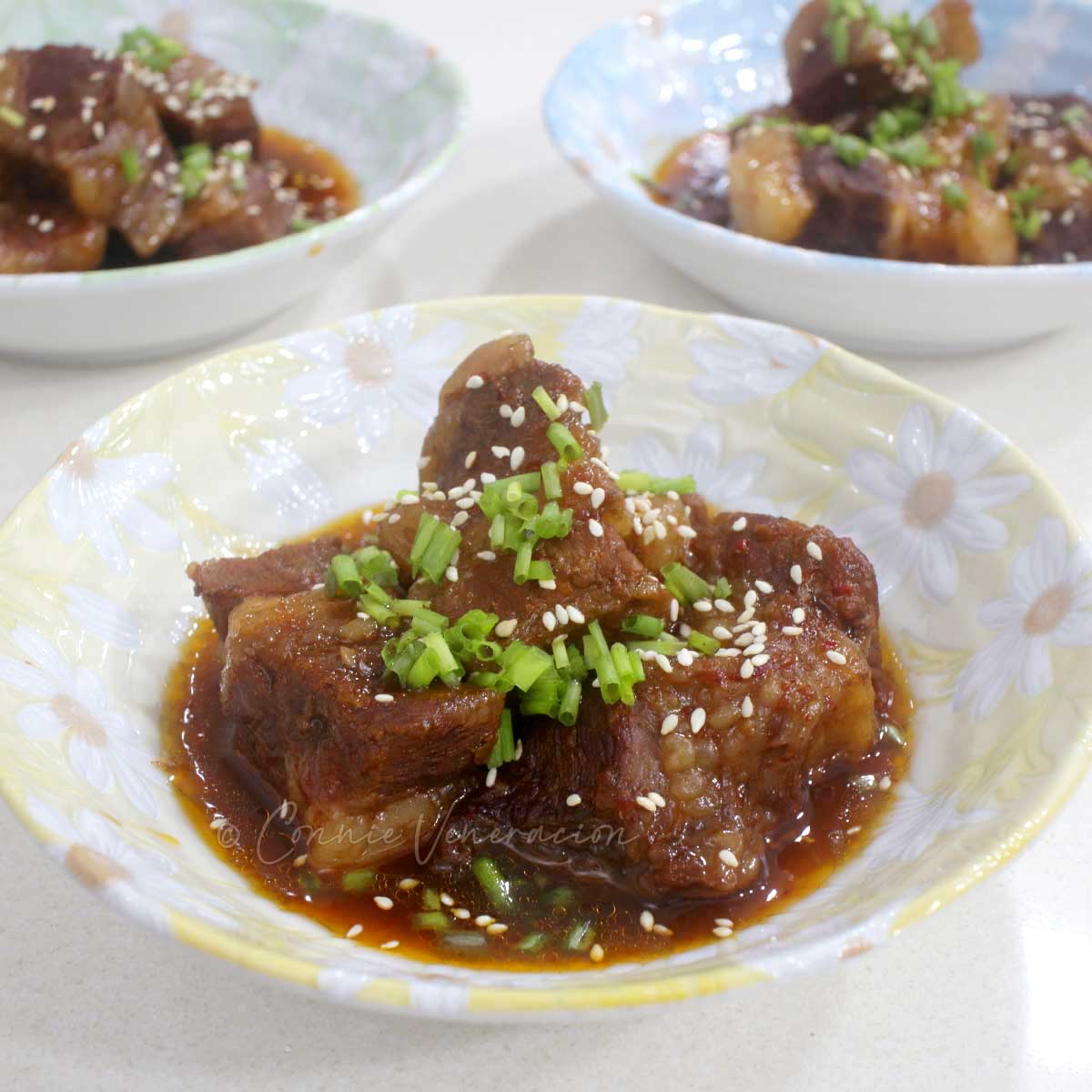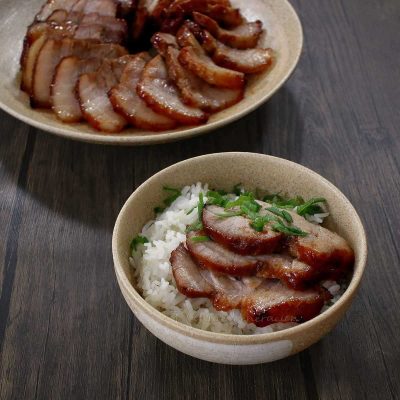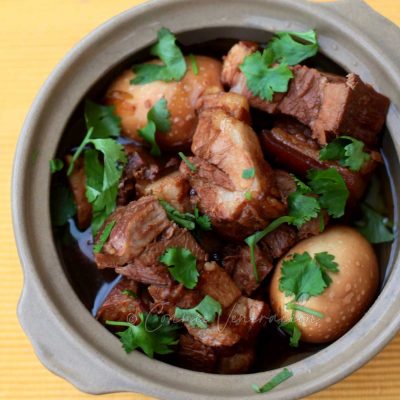Fifteen years after publishing my first beef stew a la House of Kimchi recipe, here comes the fifth version. We simply can’t get enough of this sweet and spicy stew with fork tender beef cubes. And the sauce is so tasty you’ll want to toss your rice in it!
For those of you who are not familiar with this dish, let me just make it clear that this might not be a traditional Korean dish at all. Most probably, it is Filipino-Korean — an adaptation (or an interpretation) of a version of Korean beef stew by a fantastic cook at the House of Kimchi at the Ali Mall Food Court in Quezon City. That was decades ago.
As of today, according to Google, there are establishments called House of Kimchi but I am not sure if these are reincarnations of the Ali Mall House of Kimchi or if they are just using the “House of Kimchi” name because of the reputation it has built. But, anyway… the beef stew.
The recipe is not much different from the fourth version except that we used a slow cooker this time. That means we didn’t have to let the stew sit in the fridge overnight to allow the flavors to blend better. Slow cooking for seven hours made that unnecessary.
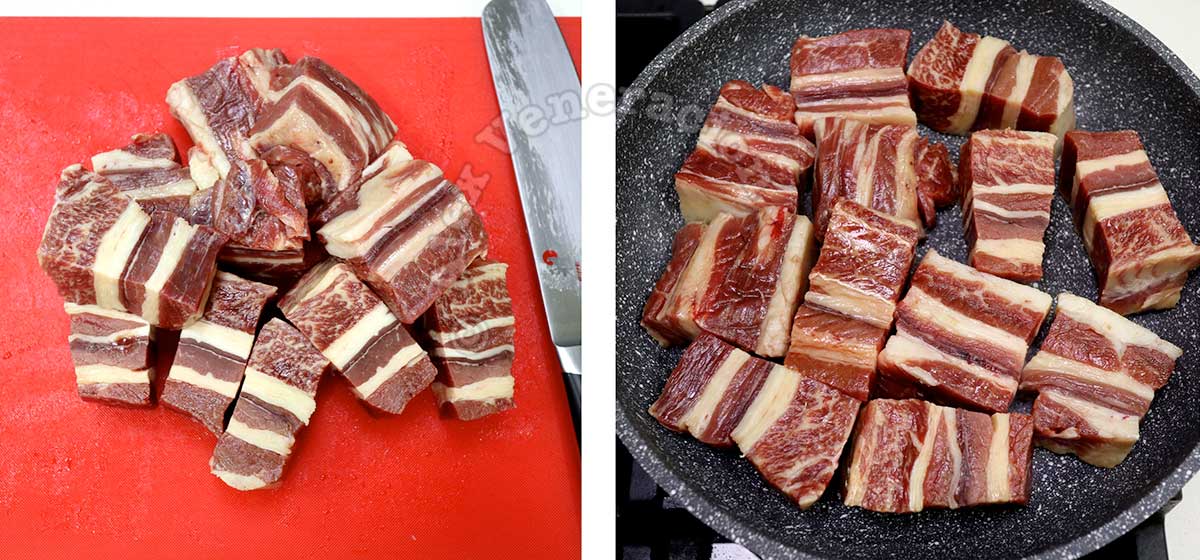
To cook this sweet and spicy beef stew, you’ll need stewing beef. Of course. We’re partial to shortplate here at home but short ribs, shank, brisket or other tough cut of beef that requires long and slow cooking.
Bone-in or boneless? Both will work. But here’s the thing. You get more meat if a boneless cut is used. But you get a more flavorful sauce if you use bone-in. Set your priority and decide.
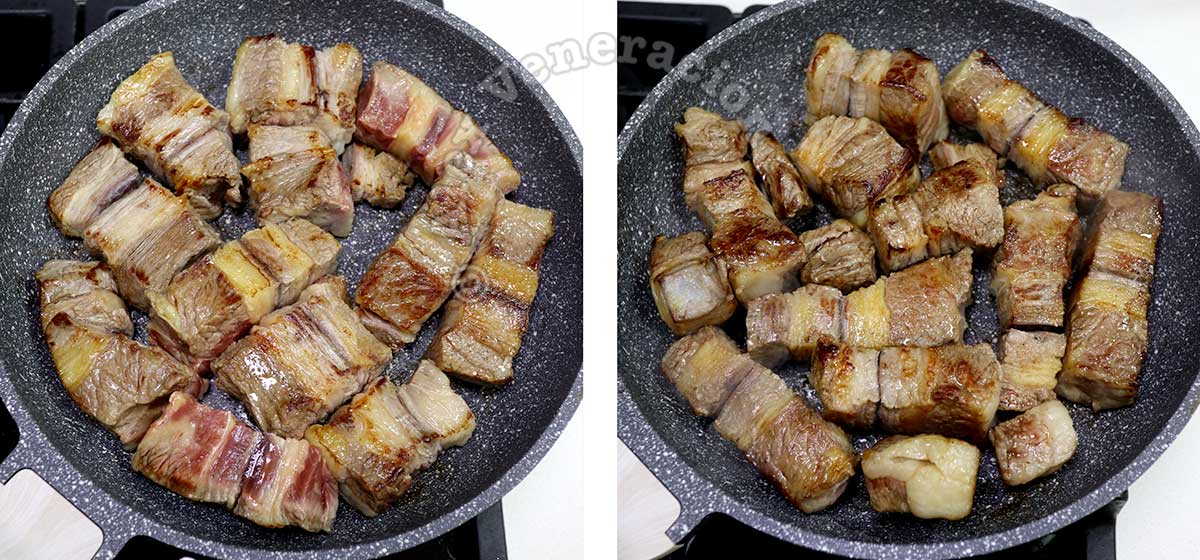
Lightly oil a heavy frying pan and brown the beef. For even browning, you need every surface of every piece of meat to get in contact with the hot pan. To do that:
- Spread the beef in a single layer
- Turn the beef on ALL sides

We take the beef off the stovetop and move the browned pieces into the slow cooker. When all the beef is in the cooker, broth is poured over them.
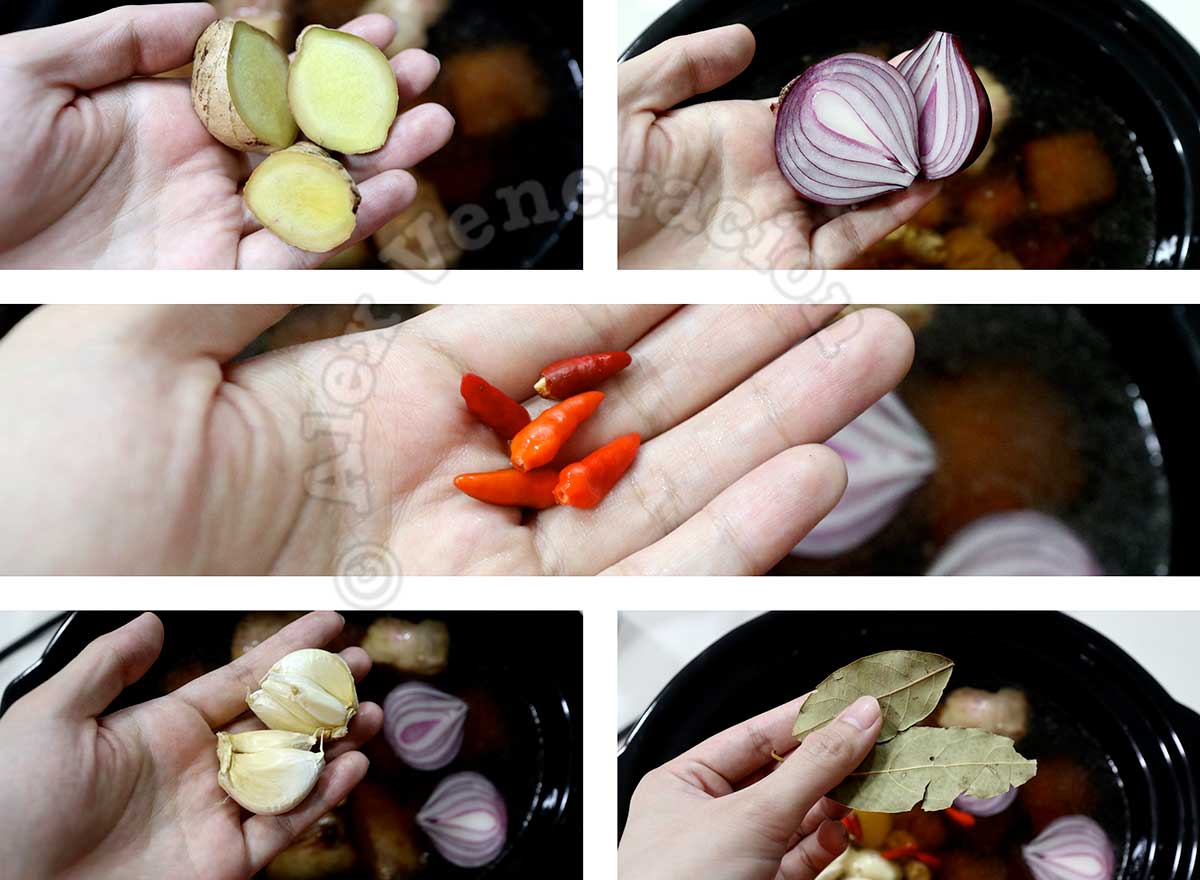
Then, we drop in the spices. Ginger, shallots, chilies, garlic, peppercorns and bay leaves. Do the ginger, garlic and shallots need to be peeled and cut in a specific way? No and no. You’re going to discard all of them later anyway. You just want to squeeze out the flavors and aromas. And they don’t need peeling or cutting or shaping in order to do that.
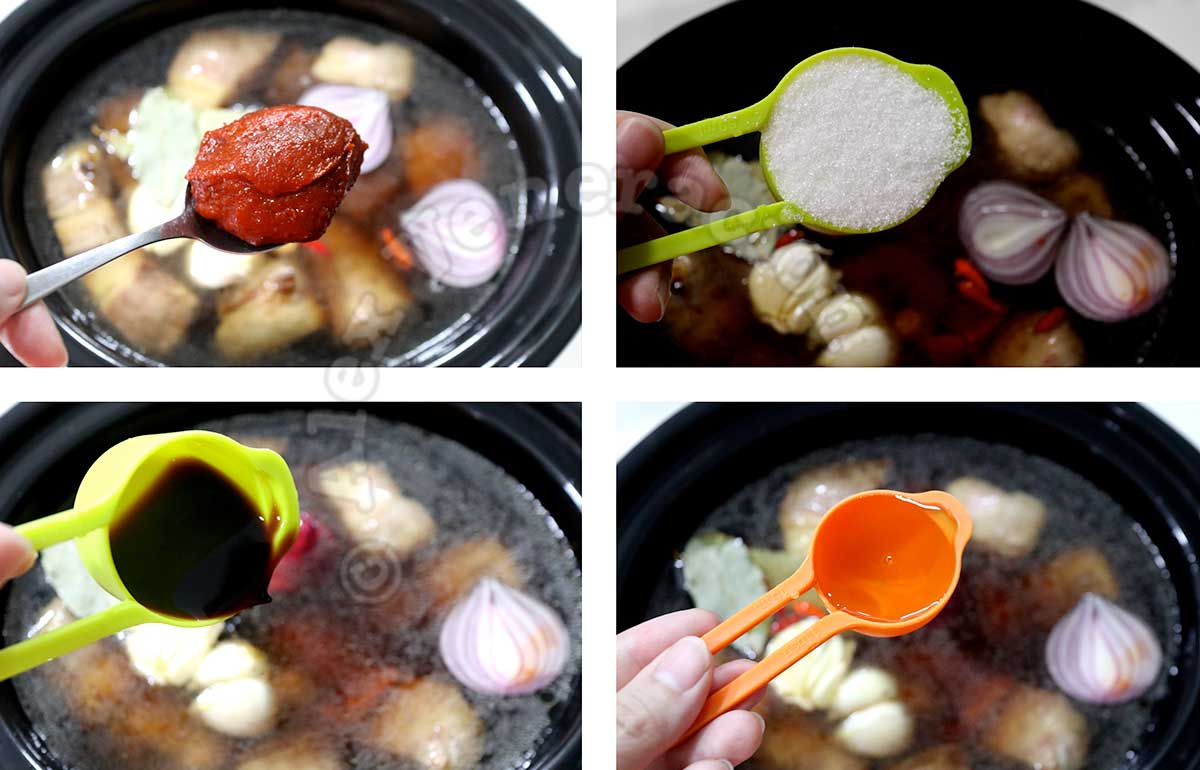
With all the spices in, we move to the seasonings. Gochujang is a Korean chili paste. You’ll also be adding sugar, soy sauce and rice vinegar. You’ll find all these in Asian groceries, or the Asian section of big groceries.
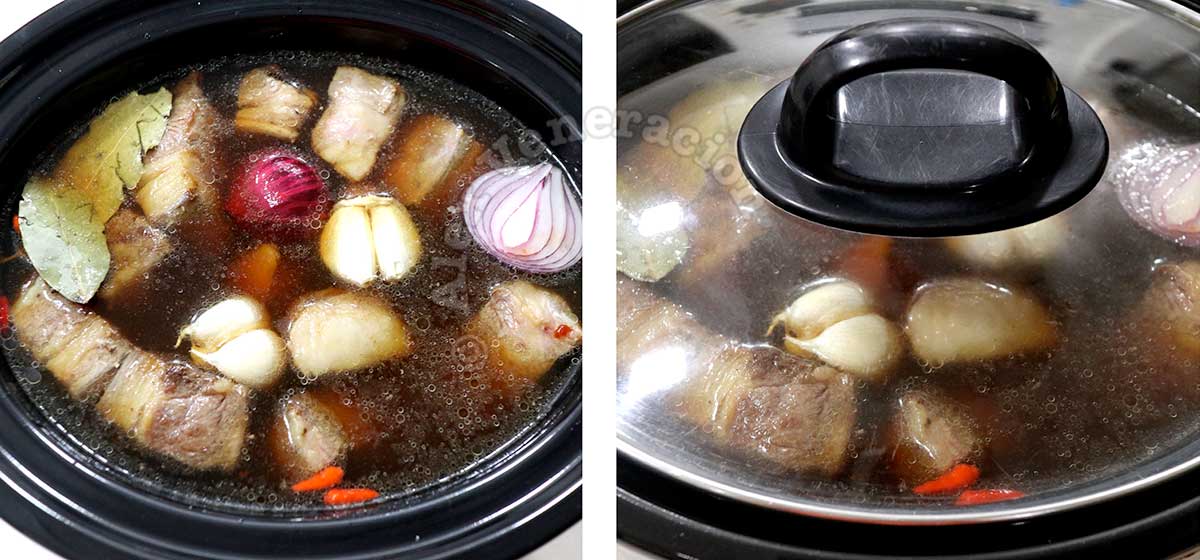
The beef, spices and seasonings are in the cooker, there’s enough liquid for the meat to cook in, so, we drop the lid of the cooker on, set the cooker to the required setting, and let the beef cook slowly as it surely soaks up the beautiful flavors and scents of all the spices and seasonings.
Beef stew a la House of Kimchi
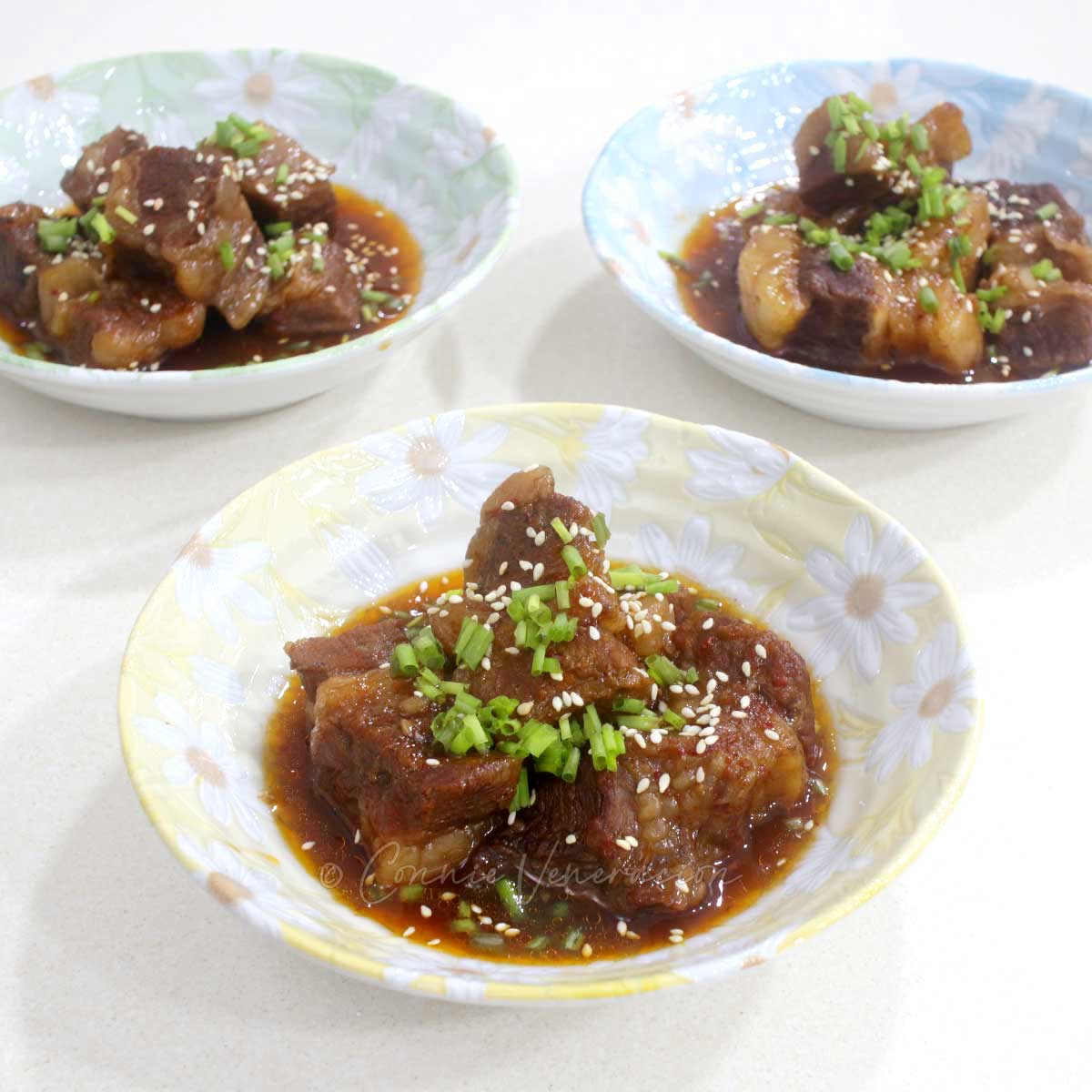
Equipment
- Slow cooker
Ingredients
Beef
- cooking oil
- 1 ½ kilograms stewing beef (short ribs, brisket, crest or shank, or a combination of two or more of these cuts)
- 6 cups bone broth
Spices
- 6 to 8 cloves garlic
- 2 shallots or 1 whole red onion
- 2 thumb-sized pieces ginger rinsed, scrubbed, and sliced (no need to peel)
- ½ teaspoon whole black peppercorns
- 4 to 5 bird’s eye chilies
- 2 bay leaves
Seasonings
- 3 tablespoons gochujang (Korean chili paste) (the amount depends on how hot you want the dish)
- 6 tablespoons soy sauce
- ¼ cup white sugar (or more, if you have a sweet tooth)
- 1 tablespoon rice vinegar
Garnish
- finely sliced scallions
- toasted sesame seeds
Instructions
- Rinse the beef, pat dry with a kitchen towel and cut into two-inch cubes.
- Heat and brush a non-stick frying pan with oil and lay the beef cubes in a single layer.
- Brown the undersides of the beef before turning them to brown all sides.
- Transfer the browned beef cubes to the slow cooker and pour in the broth.
- Add the ginger, shallots (or red onion) chilies, garlic, peppercorns and bay leaves.
- Stir in the gochujang, sugar, soy sauce and rice vinegar.
- Cover the slow cooker, turn on HIGH and cook for two hours.
- Turn down the heat to LOW and cook for another five hours.
- Scoop out the beef, transfer to shallow bowls, ladle in the thin sauce, and sprinkle with sliced scallions and toasted sesame seeds.
- Serve with rice. Optionally, serve the thin sauce on the side as broth.

